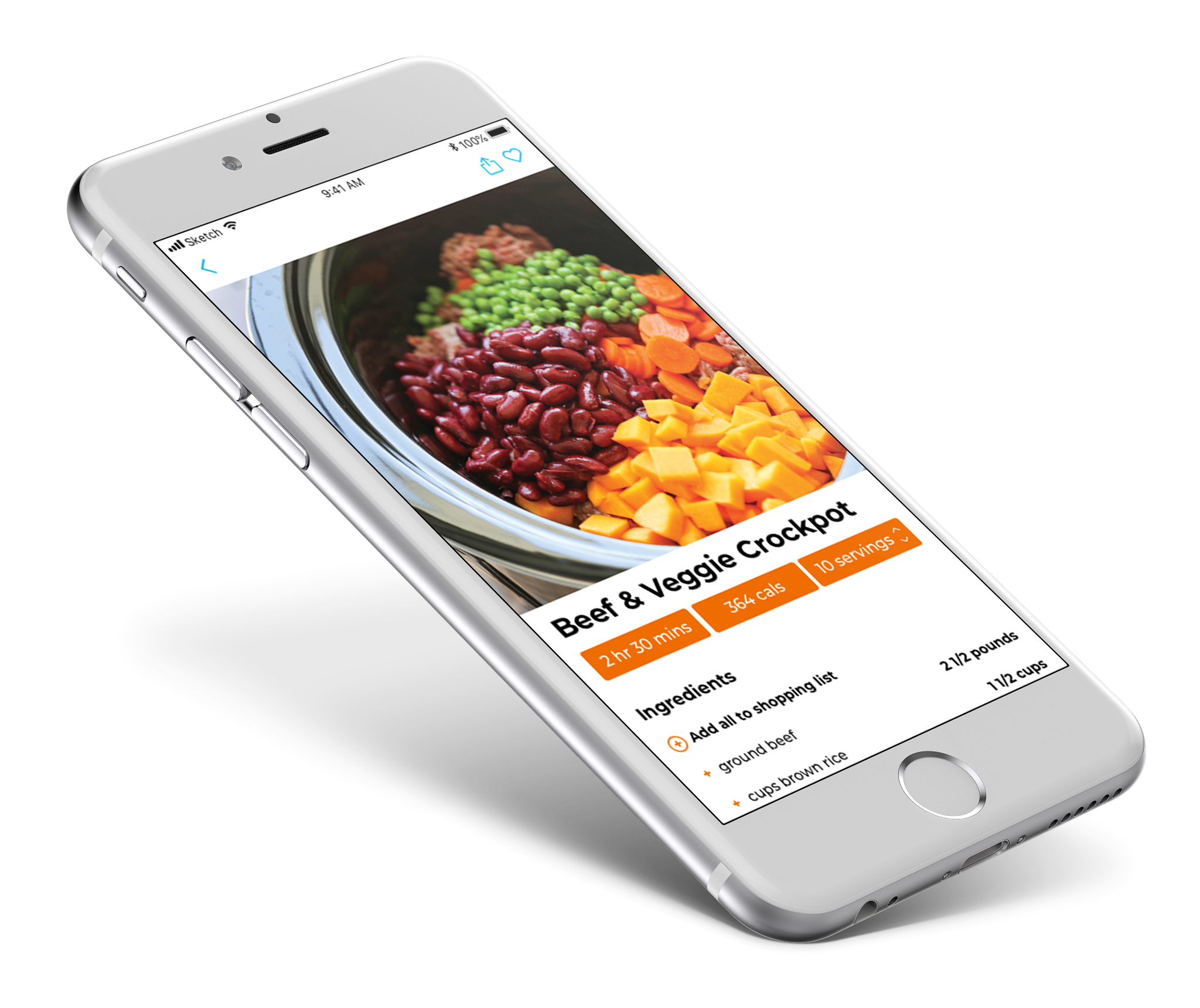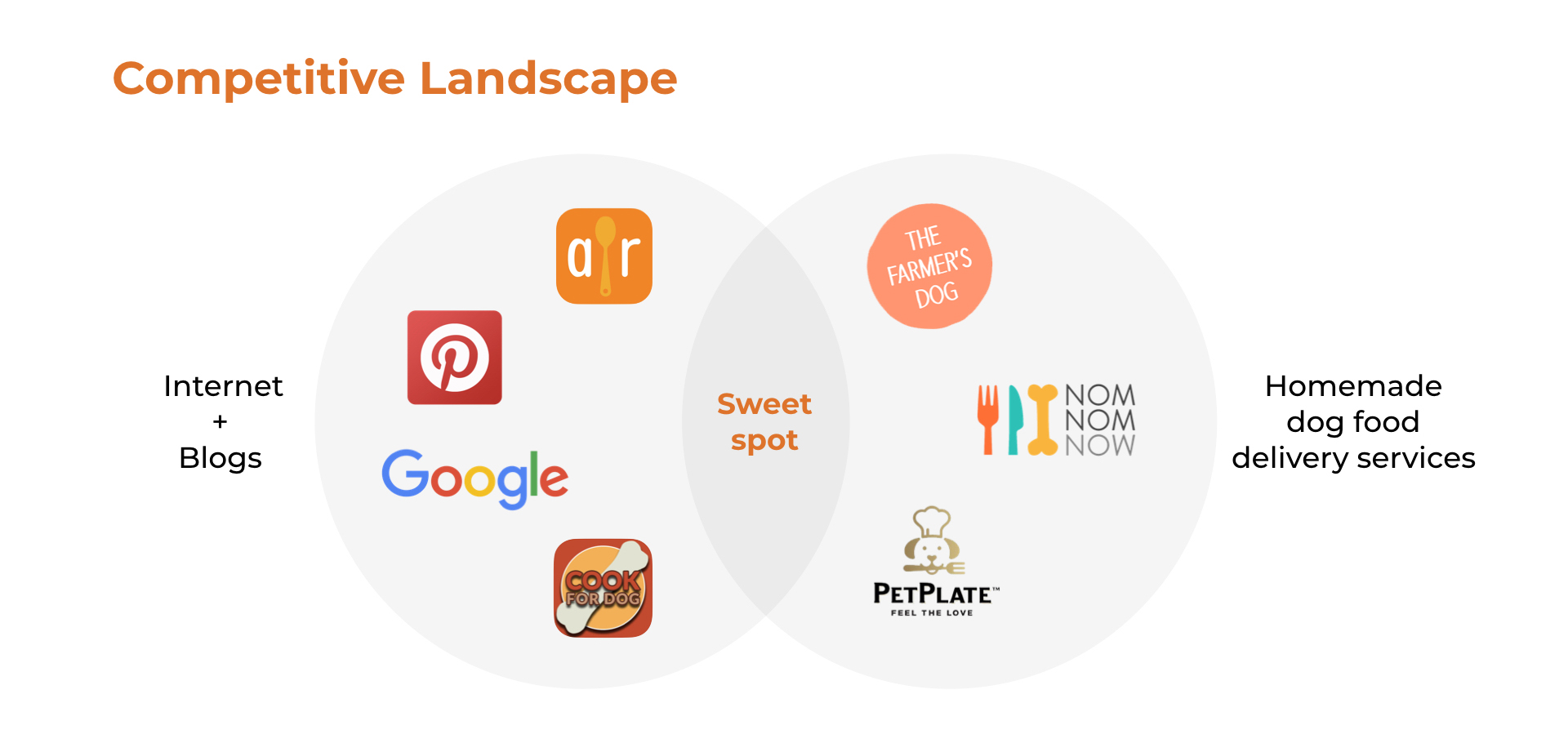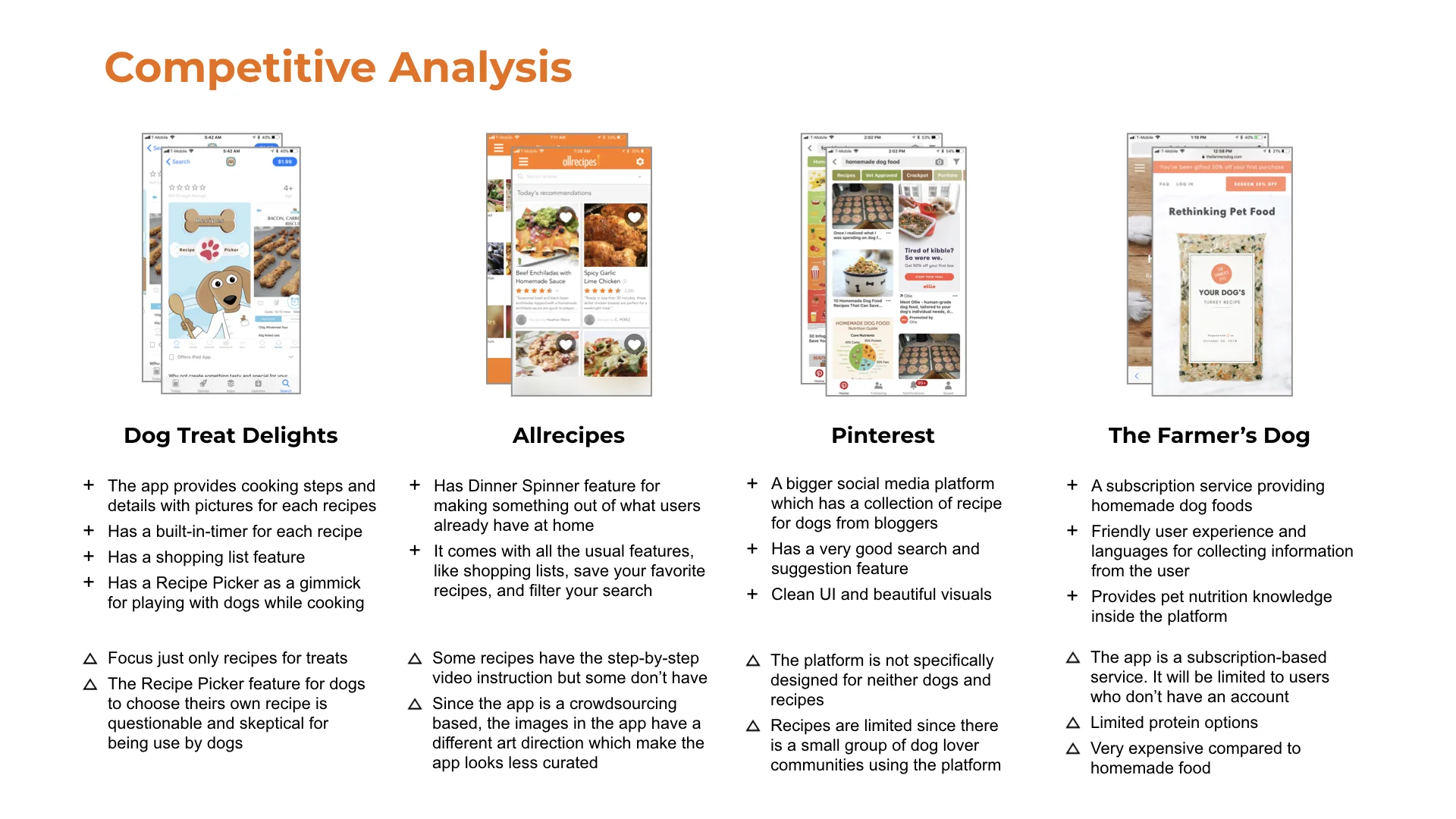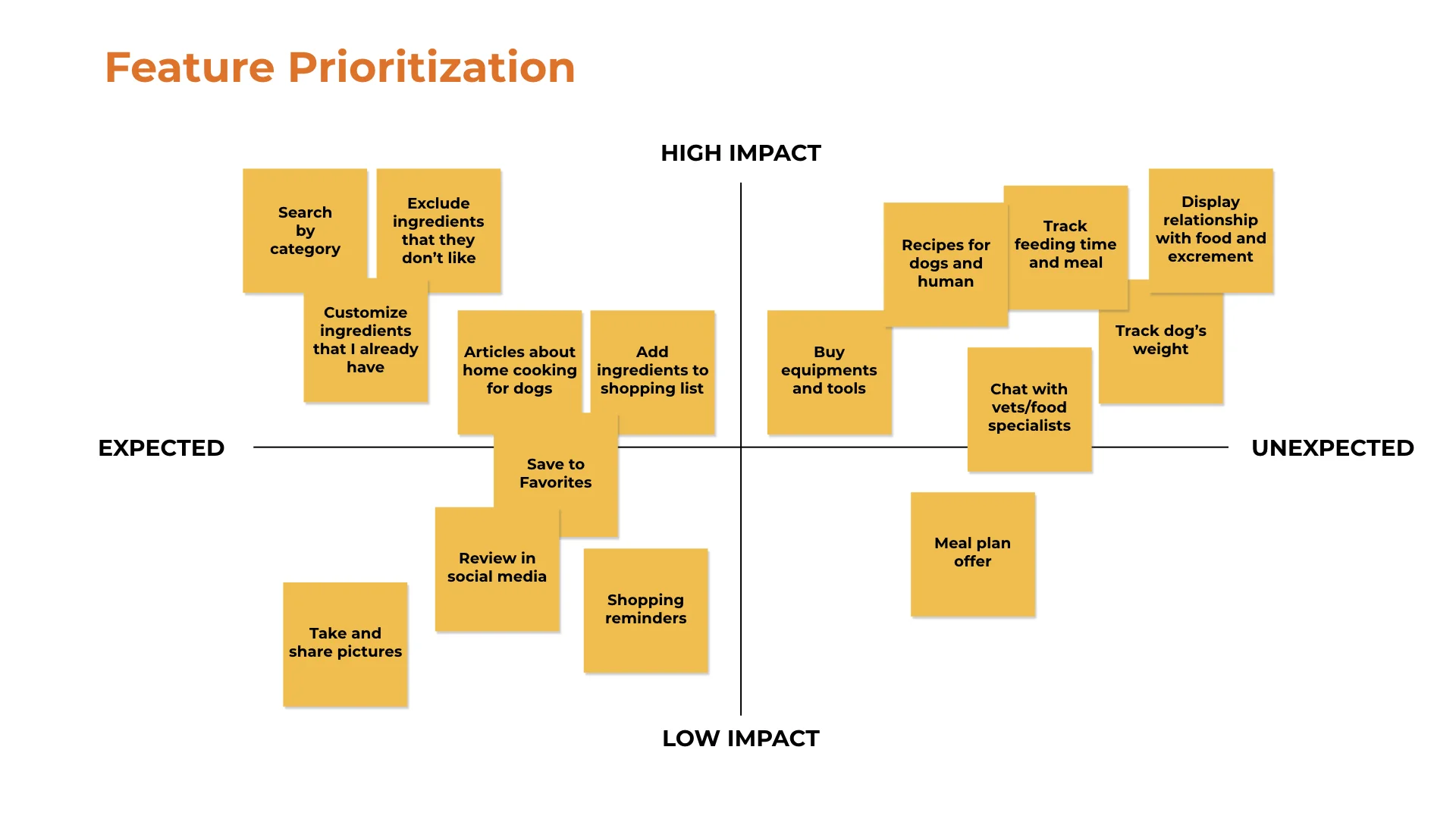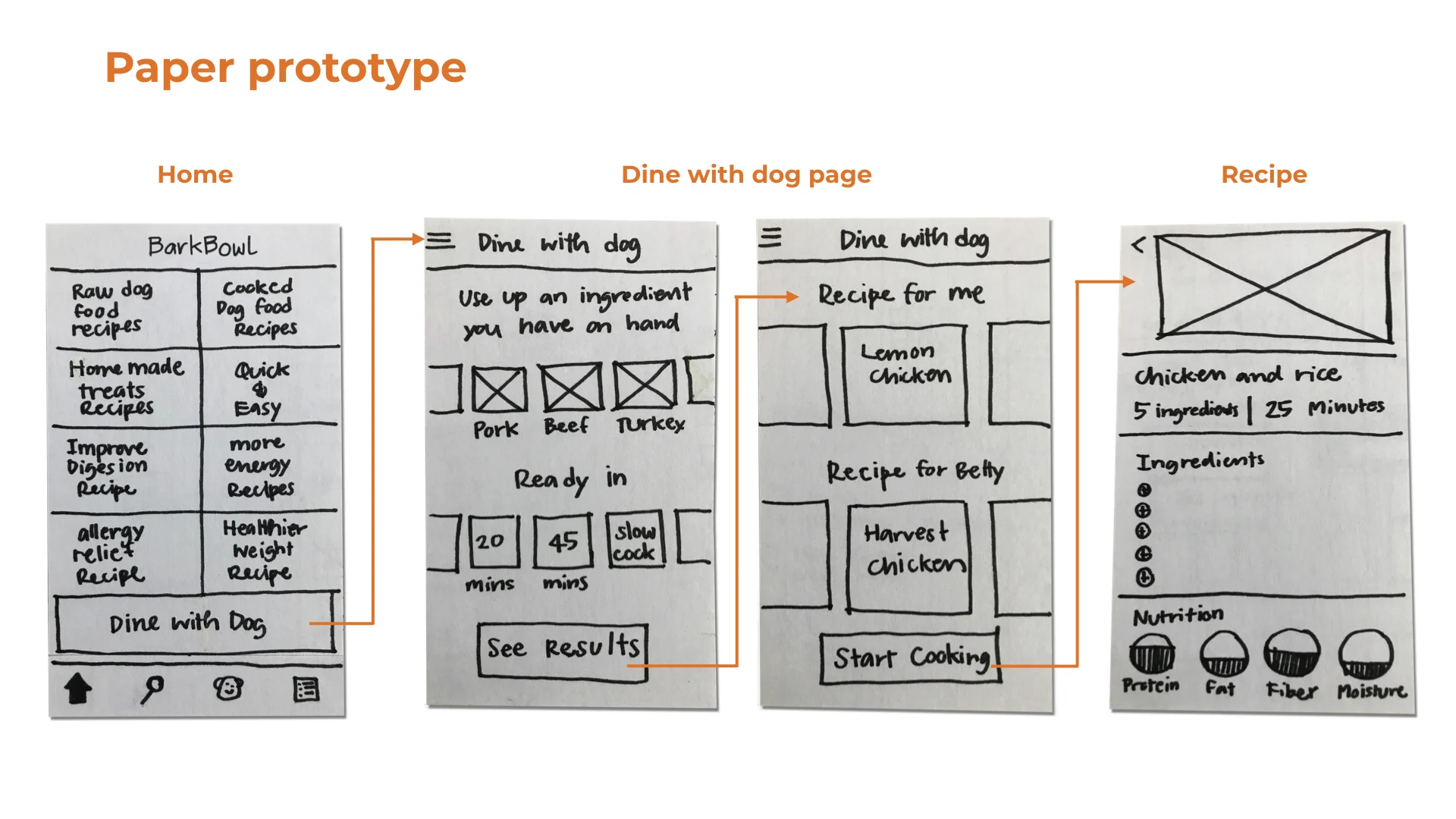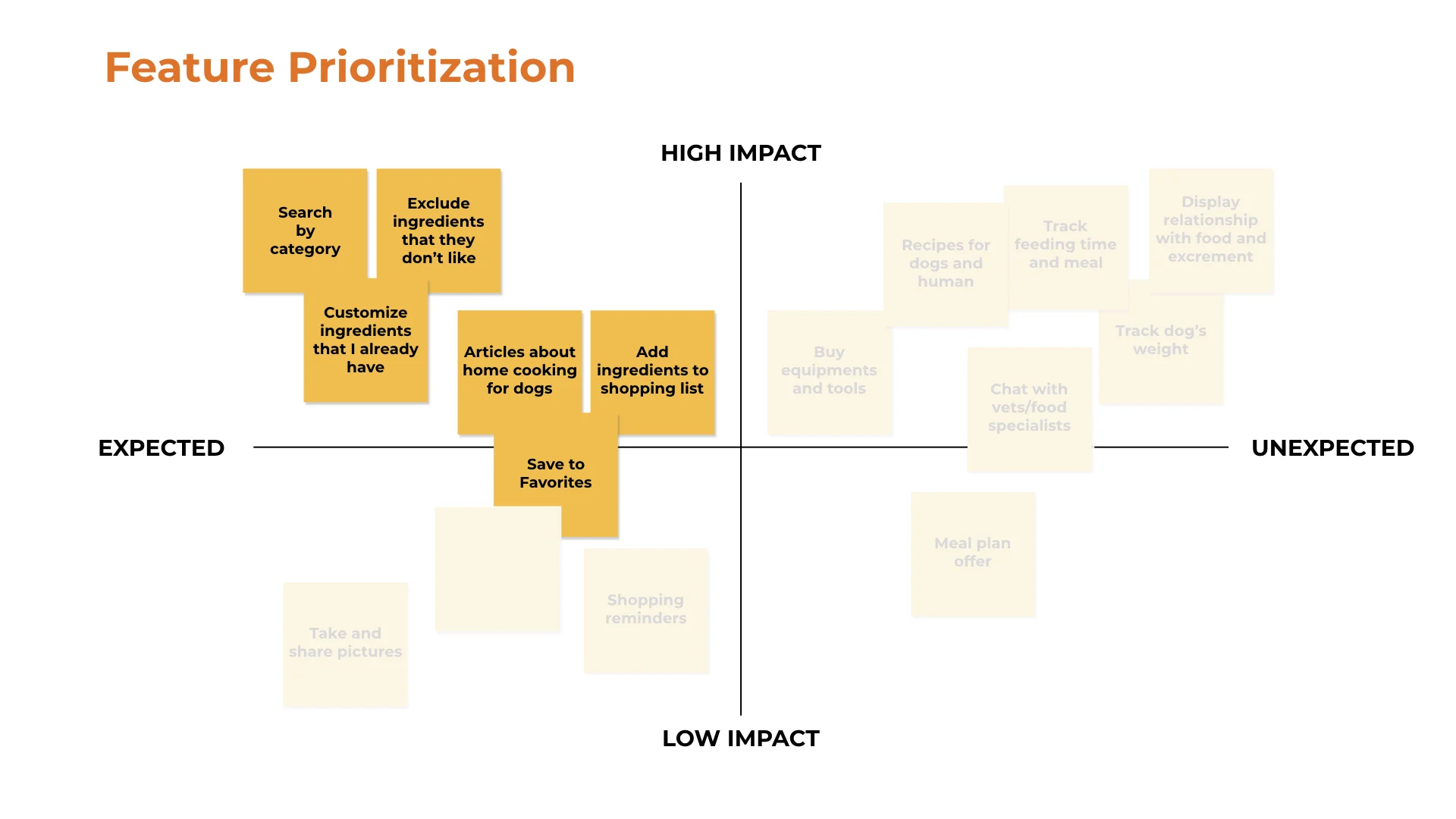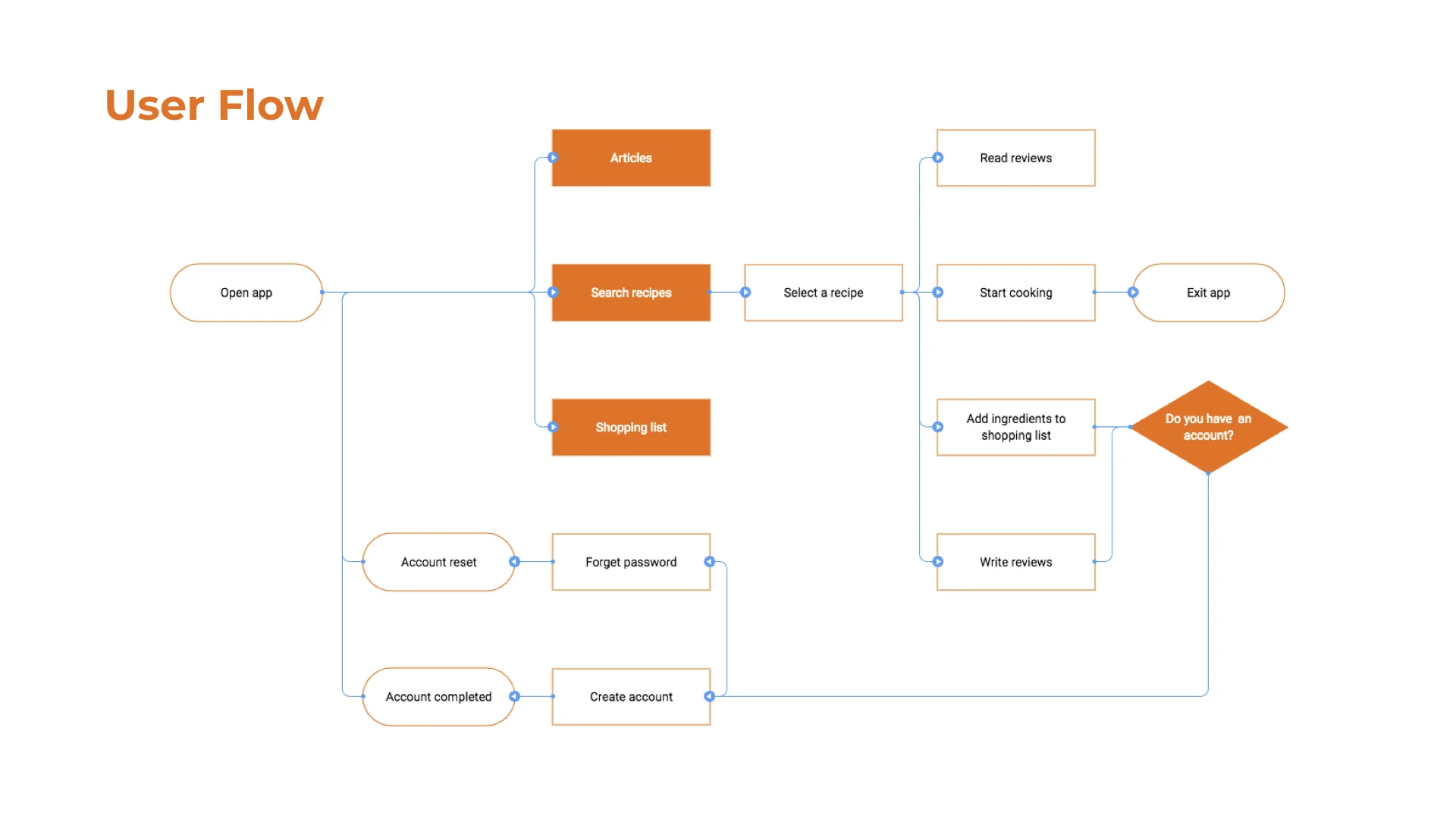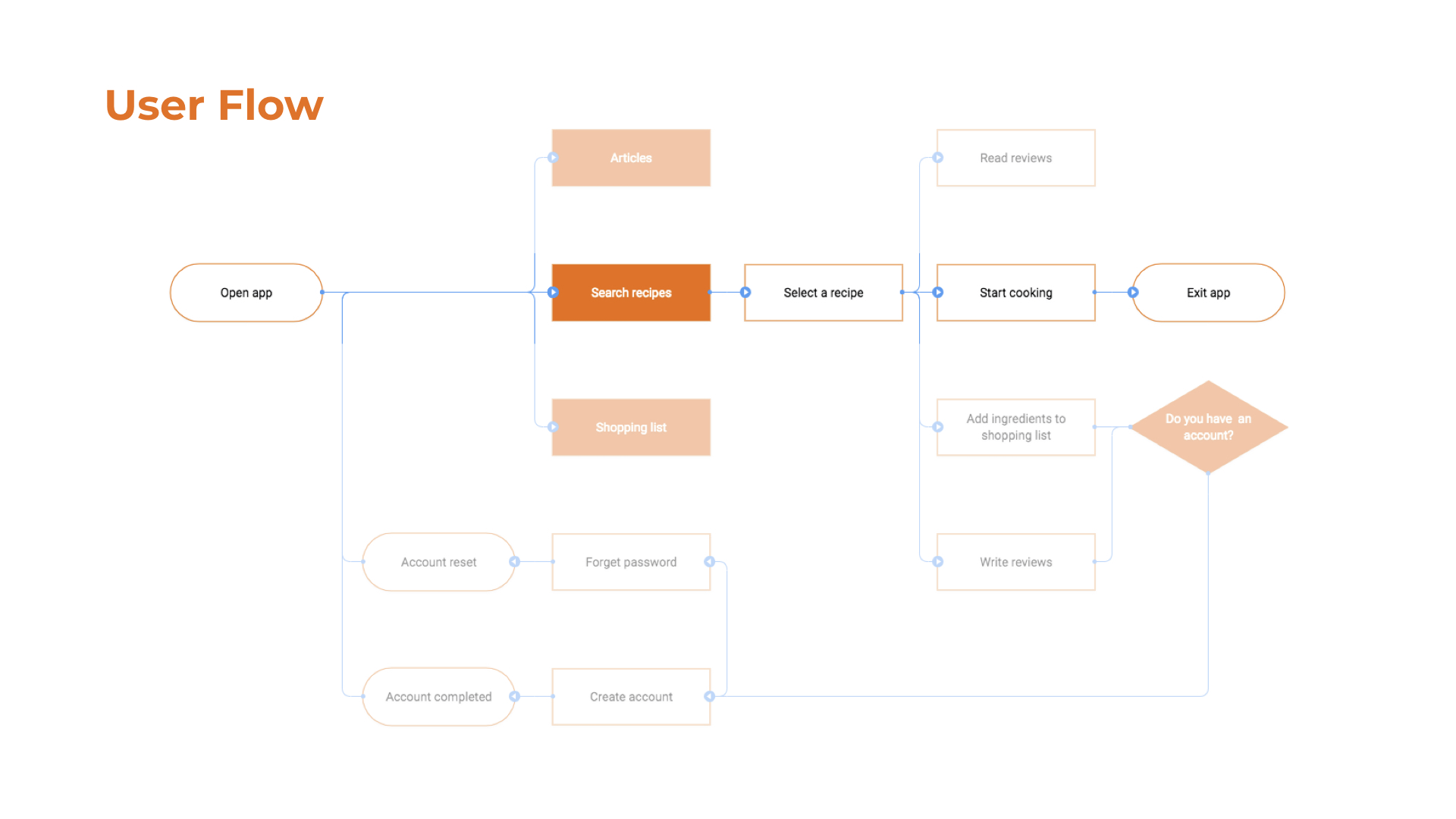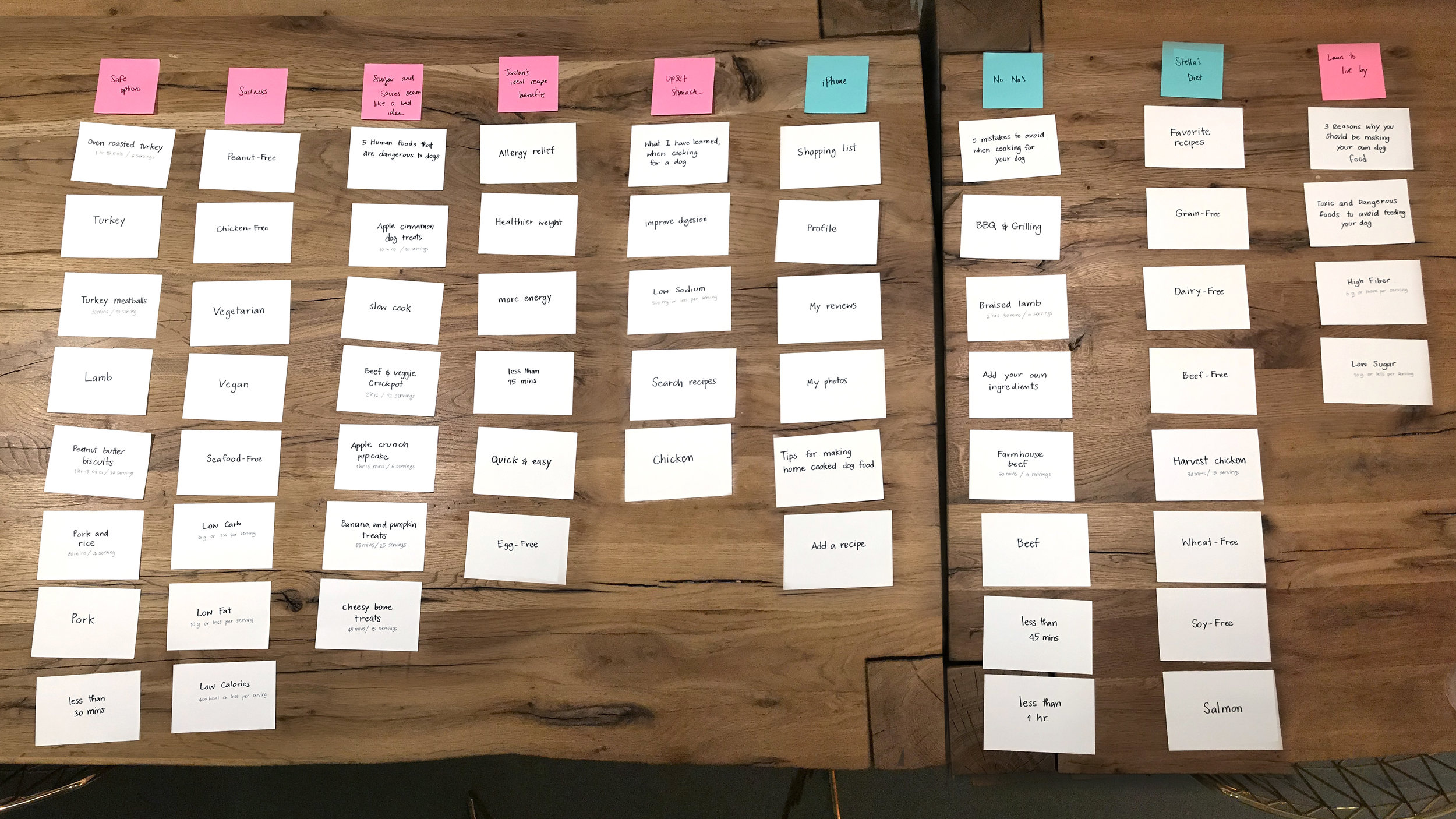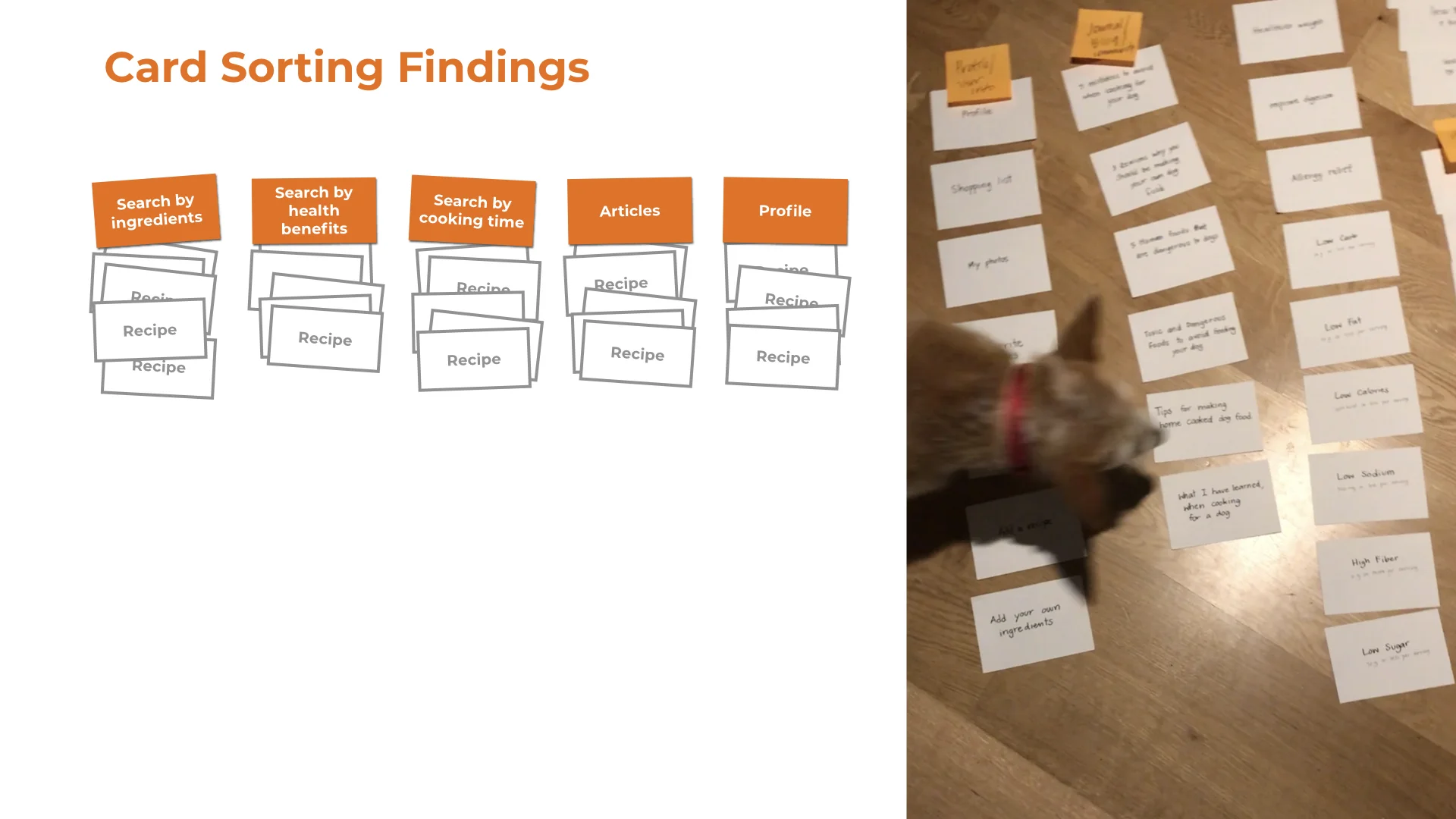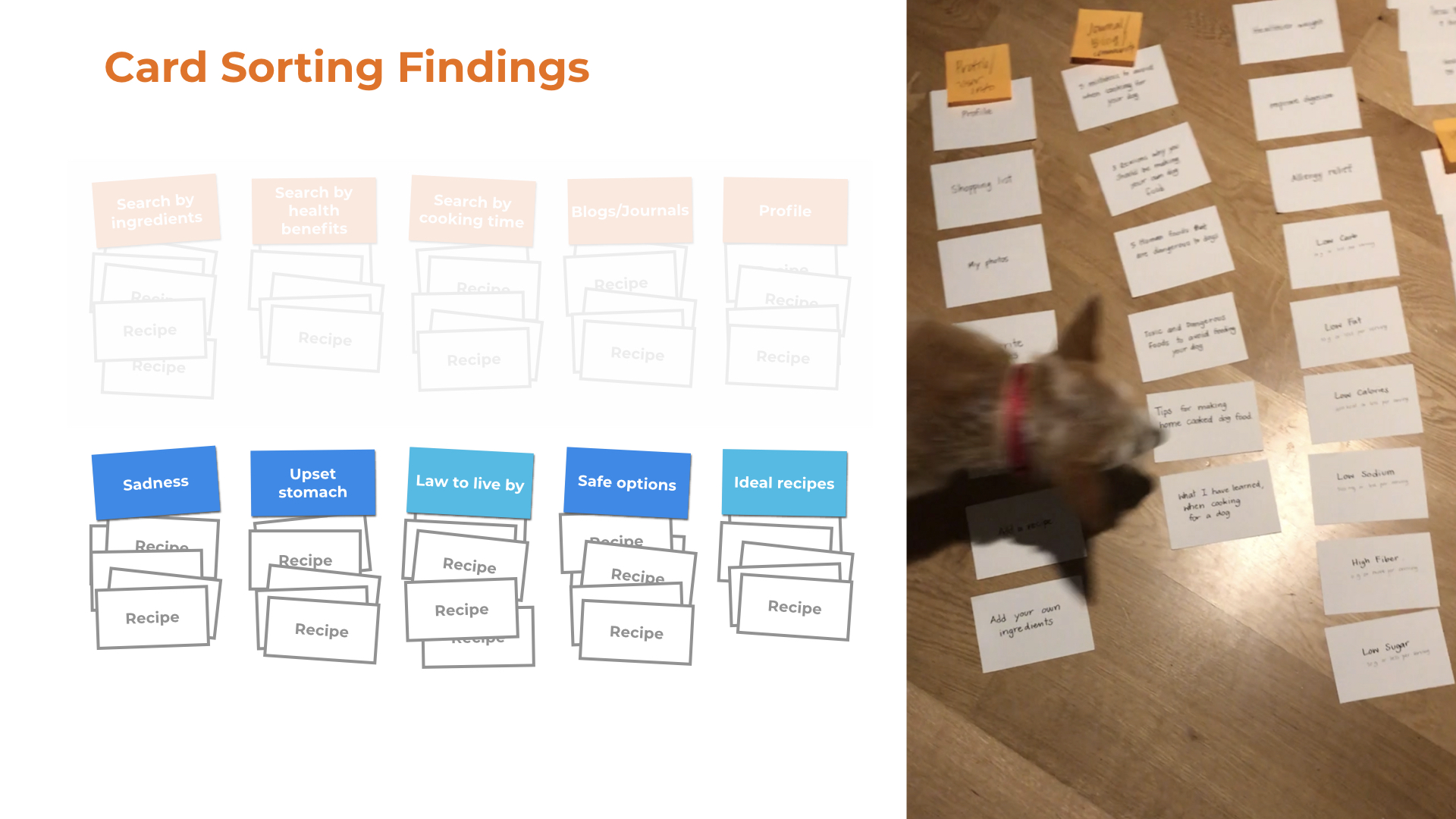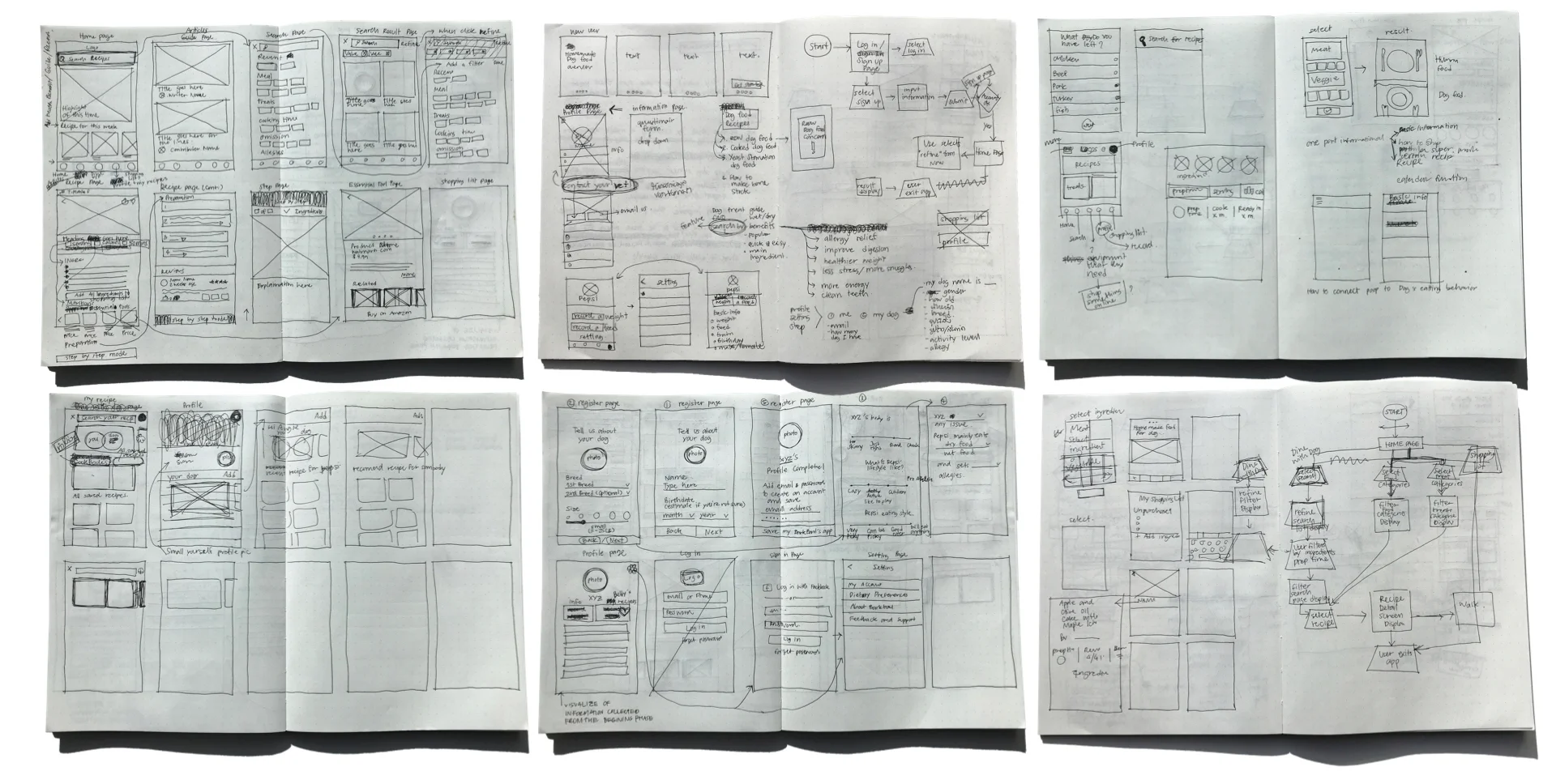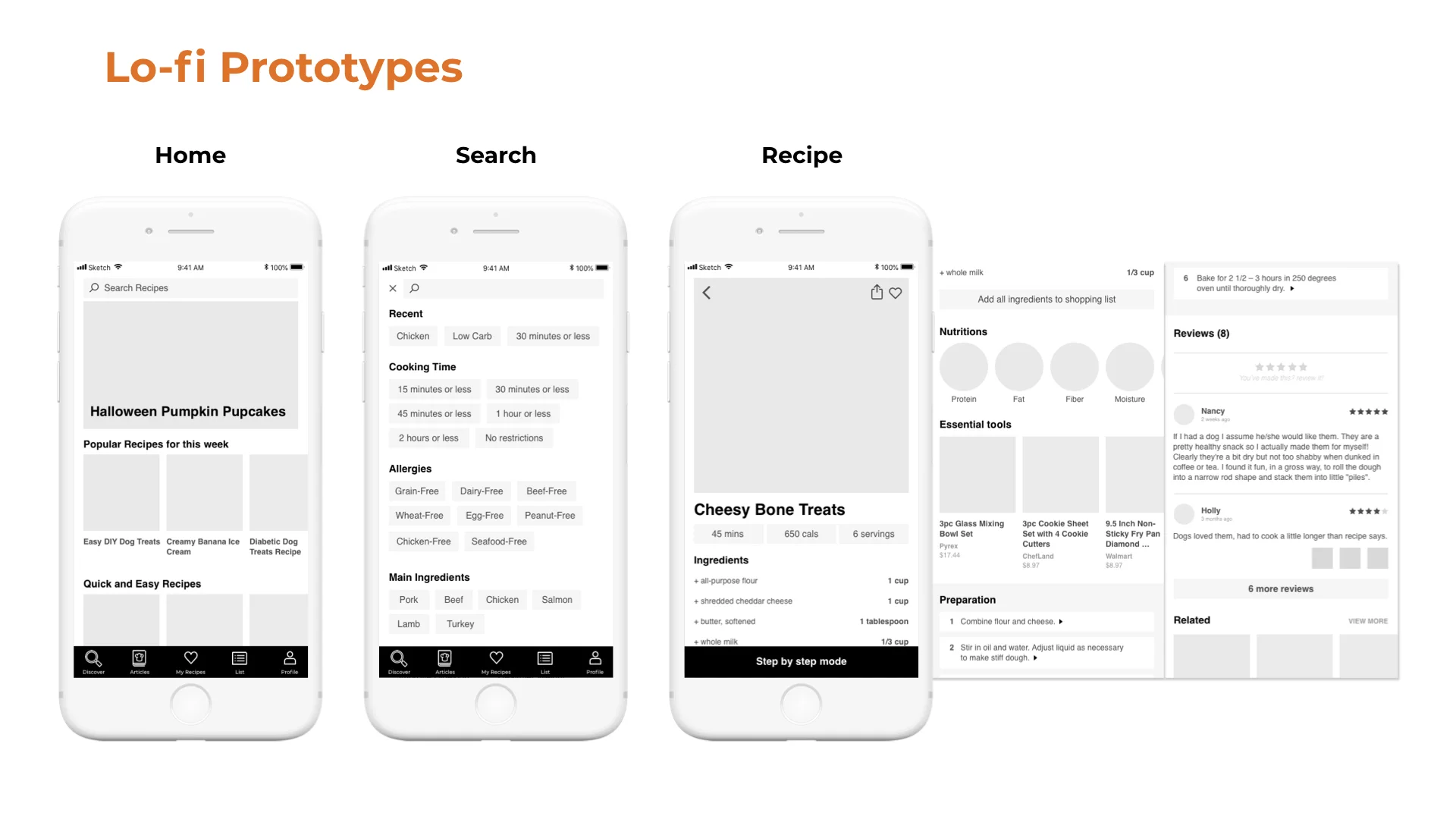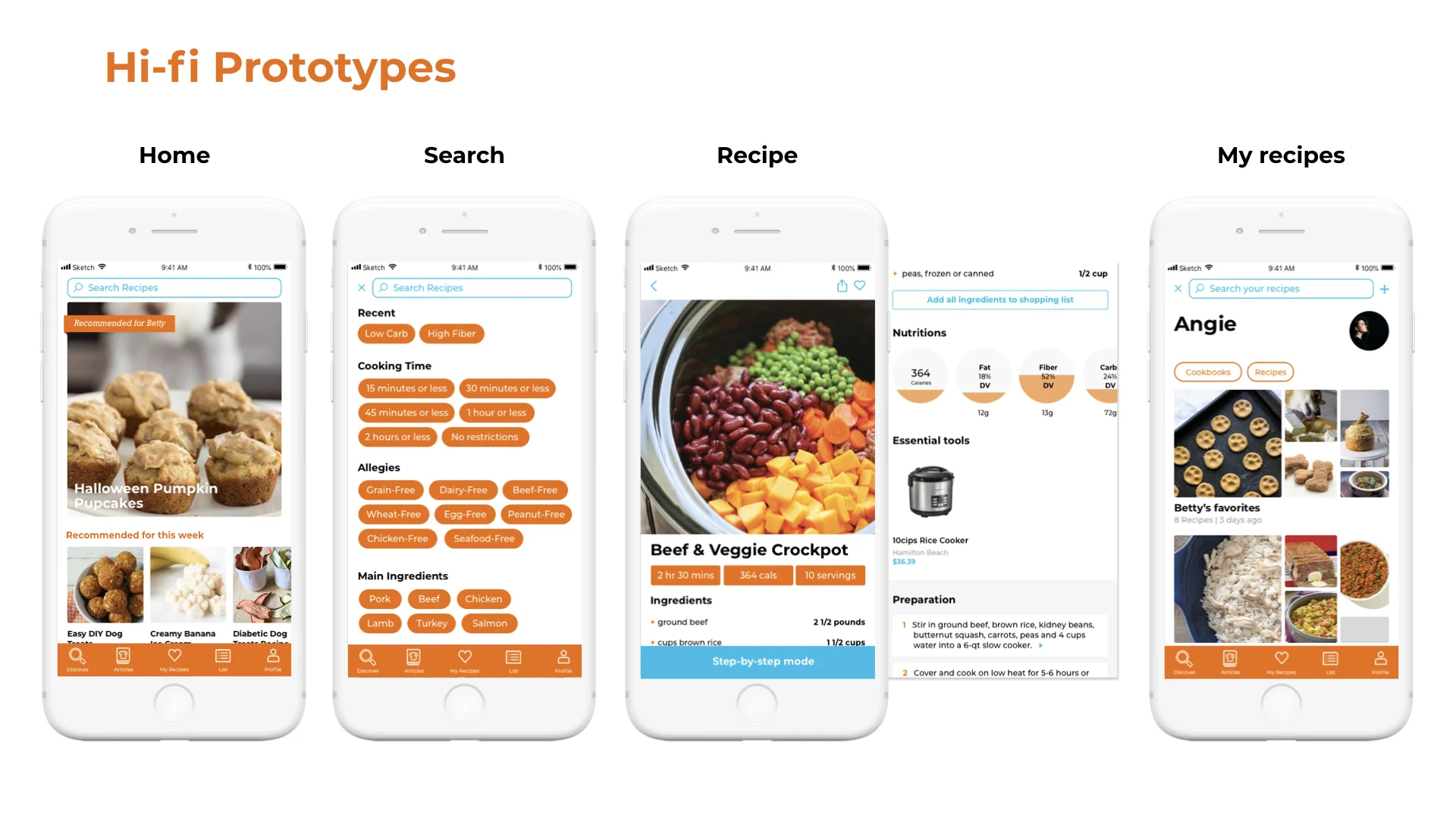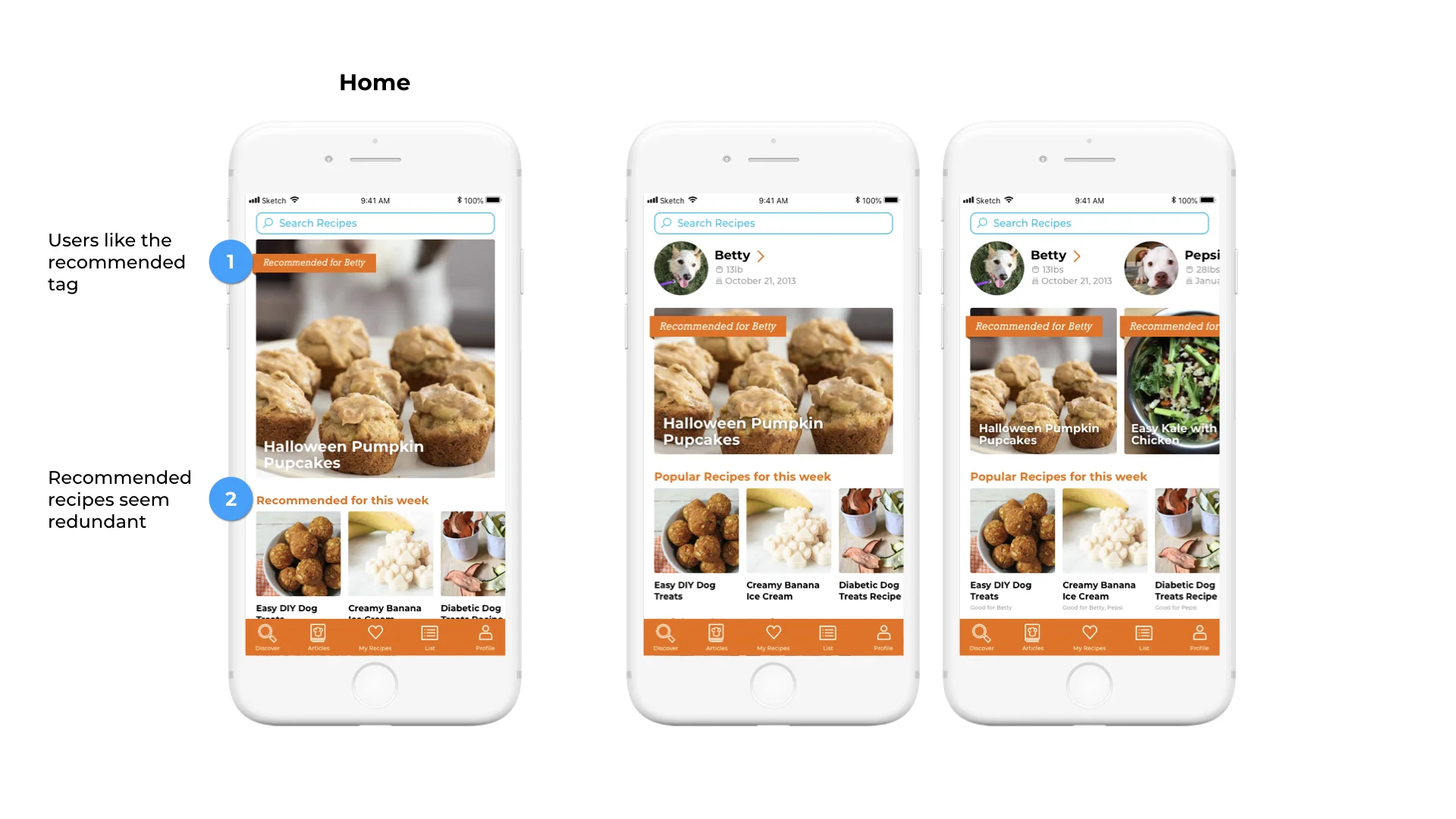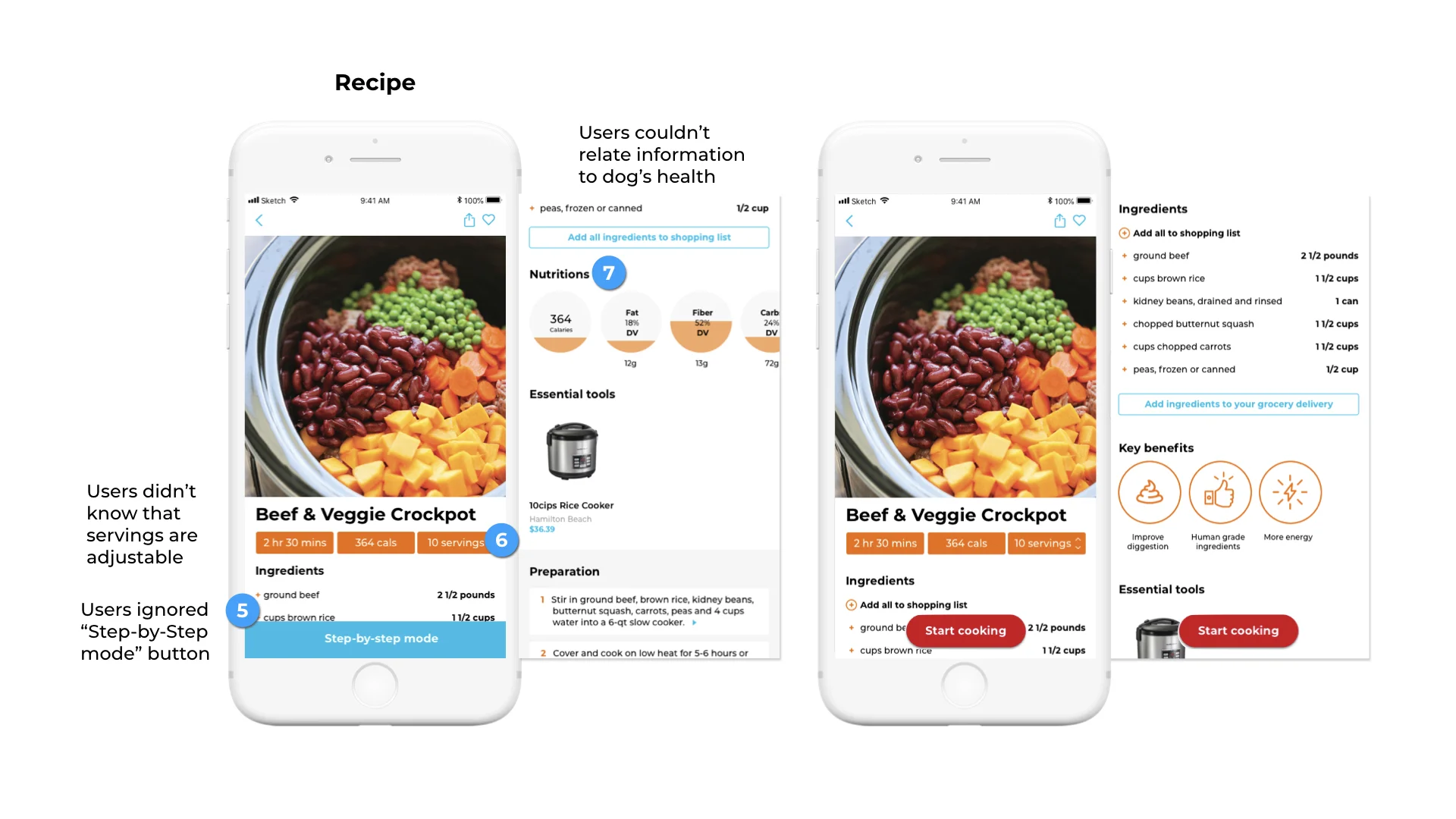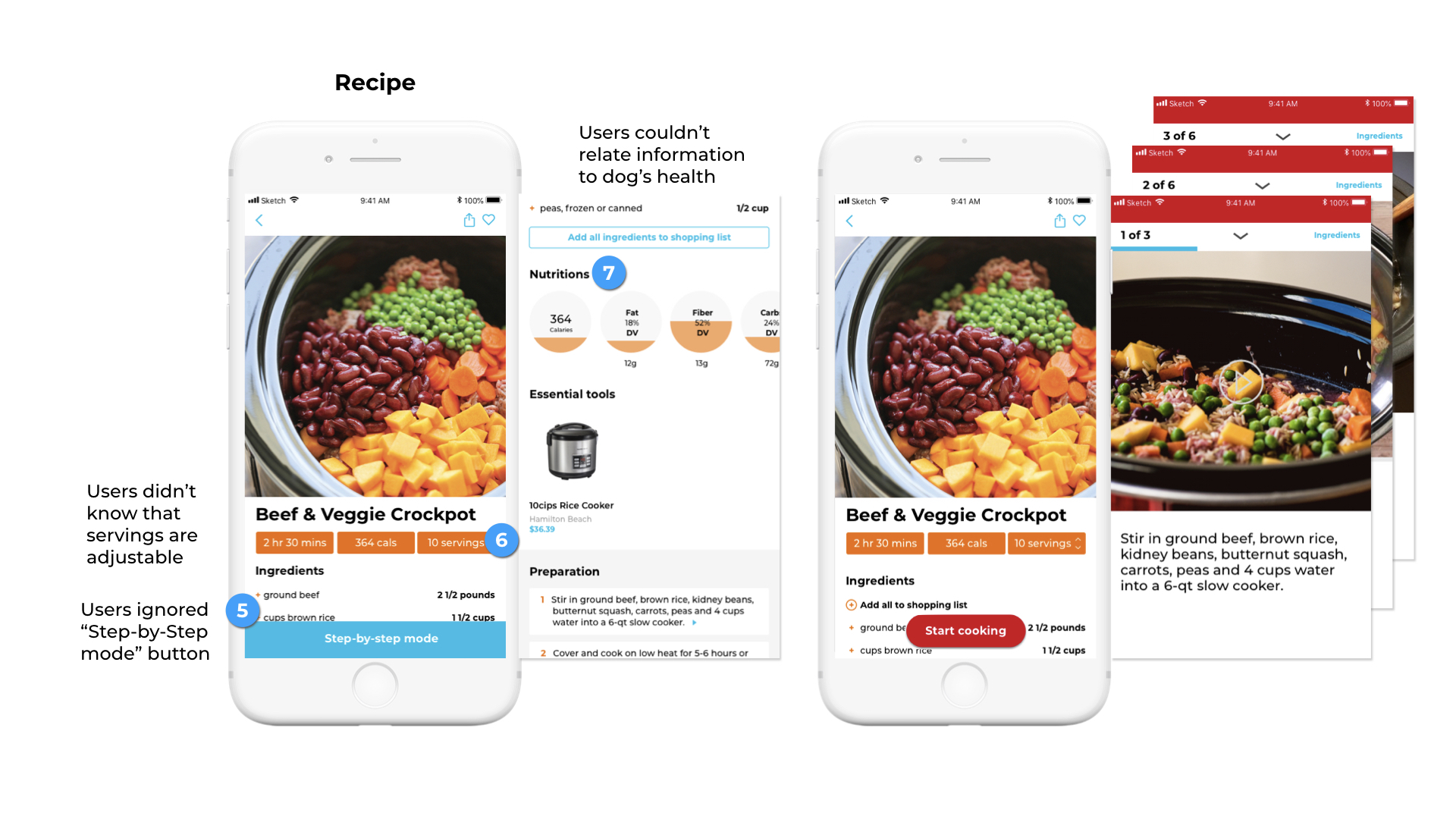BARKBOWL
2018
User Experience Design | Branding | Art Direction
BARKBOWL is a mobile application that helps dog owners discover homemade dog food recipes. The app will be a place where users can find information, resources and guidelines about homemade dog diets. It will provide recipes with instructions that are easy to follow and simple to make. Using human-grade ingredients, the owners can pick recipes for cooking dishes designed specifically for dogs. The app also provides options for recipes that owners can cook for both dogs and humans.
The Original Problem Definition:
“The problem I suspect is that dog owners need a way to enhance communications
and interactions between them and their dogs because they want to be able to
understand and develop a healthy relationship with their pets.”
I kicked off my design process by conducting five in-person interviews. The goal of my research was to gain a deeper understanding of dog food, help determine if a problem really existed, refine the problem statement, and reach a conclusion about the direction of the new product. This activity yielded rich insights that helped me prioritize my areas of focus. Here are affinity mapping notes and quotes from the interviewees.
Below are some of the keys findings:
The dog owners already had a basic understanding of their dog’s behaviors.
Dogs tend to understand basic communication or command from the owners.
The owners saw dog home training as a way to play with their dogs or give them an attention.
The owners mentioned that they preferred a professional dog trainer to help solve more serious dog behavior challenges.
However, dog owners who had home training mentioned repeatedly their concern about dog food and the treats that they feed their dogs. They didn’t want to cause their dogs to gain weight by giving them too much food or treats, which could end up causing health problems. In general, dog owners wanted to give a healthy and well-balanced diet to their dogs. Sometimes, they have to trick their dogs to eat vegetables and fiber by preparing homemade food for them. They mentioned that high quality food helps to improve their dogs’ bowel movements, which is an indicator to see if dog is healthy and in a normal condition.
After the interviews, I found out that research findings did not support the initial problem statement. Working from my findings, I pivoted my problem statement to focus around food for dog.
Competitive Analysis
I did a competitive landscape analysis to see what other products and services are available in the market. Based on my research, there were some delivery services that provide fresh homemade dog meals in subscription basis available in the market. Besides that, there were articles and recipes about homemade dog foods available in several online platforms. The findings showed that no one has been provided a product for this particular propose yet. Having said that, there is an opportunity for developing a mobile app that provides homemade dog food recipes and knowledge around cooking for dogs.
I then performed a competitive analysis using pluses and deltas (+/▵) to help focus on the value that competitors offered to users.
Next, I developed a persona to help me illustrate a clear picture of a typical user’s needs, as well as a clear outline to the specific problem I was looking to solve. I also provided a concrete method to ideate towards an “informed starting point” for testing.
Illustration by @joanaavillez
Feature Prioritization
I created feature prioritization mapping by using expected/unexpected and high impact/low impact as the axes. I decided to tackle all of the features in the high impact quadrant, aiming to go the extra mile to impress the user with “Recipes for dogs and humans“ feature.
I then tested out my ideas for “Recipes for dogs and humans“ feature with paper prototyping, and I did a quick user testing to see if users could understand the feature.
After the testing, users said that it was easy to navigate within the app but they had a hard time understanding the “Recipes for dogs and human“ feature with the basic recipes section. Additionally, recipes that work for both humans and dogs are very limited. Therefore, I decided to stick with the features in the top left corner for the launch of my MVP.
User Flow
From the selected features and my first rough sketches, I started mapping out the user flow. The ideal flow is straightforward: Users would open the app, search for a recipe, select the recipe, start to cook, and exit the app. Users can also read articles to learn about cooking for dogs, health & wellness for dogs, and dog nutrition.
Card Sorting
Next, I began to manage the information architecture for the app. I created an open card sorting test with four users. There was a consistent theme on how the majority of users categorized cards. However, one of the participants had a unique categorization based on how the dog felt after eating a meal, e.g. Sadness, Upset stomach, Law to live by, Safe options, Ideal recipes benefits. I then considered including a feature to be able to create collections of favorite recipes features or customizing your homepage. There was also a comment on vegan food for dogs, saying that it might not be a good idea to only feed a dog vegetables. I subsequently considered removing the vegan/vegetarian option from search filter.
Sketches
I kicked off an intensive round of sketching to synthesize the team’s thinking and explore as many variations as possible.
Although I’d committed to a lightweight, incremental approach to my work, I knew the first prototype would be crucial. It had the potential to set the tone for the rest of my work. Because I envisioned this project starting off with a simple MVP, and the Lean UX process was still quite new to me, I needed to have the content laid out in a tangible way to test with users.
From their feedback, I decided to move quickly to a high-fidelity prototype. I developed a simple interface with basic interactions, and designed simple visuals based on the knowledge I accumulated about the user base and their needs. My goal was to produce “just enough, just in time,” without the result being too conceptual or vague.
Usability Testing
After finishing the high-fidelity sketches, I began the usability testings, only to discover more problems the required new ideas, changes, and iterations.
From the numeric annotation above, here is the feedback I received:
Users liked the recommend tag on the home page
Recommended recipes feed seemed redundant, with the recommend tag on the top of the page
Users couldn’t select multiple search filters at once
Users wanted to see “Main Ingredients” on the top since they thought it was more important than other filters
Users didn’t know that serving portions were adjustable
Users ignored the “Step-by-Step mode” button and thought that it was an advertising banner
Users couldn’t relate nutrition information to dog’s health
Users liked the “Essential tools” feature and thought that it was helpful for cooking preparation
Users liked the “Reviews” section
Users didn’t understand how the “My recipe” page worked
Reiterate
I adjusted the design based on feedback from the first round of usability testing. Below is the slideshow from my design revision.
Below is a demonstration of my design.
Next Steps
For the next steps, I'll have a second round of testing using my design revision, continue working on refining interface and user experience from the second round of testing, and then I will add more features in future iterations of the app. I also aim to partner with veterinarians and animal nutritionists to help validate recipes within the app.

